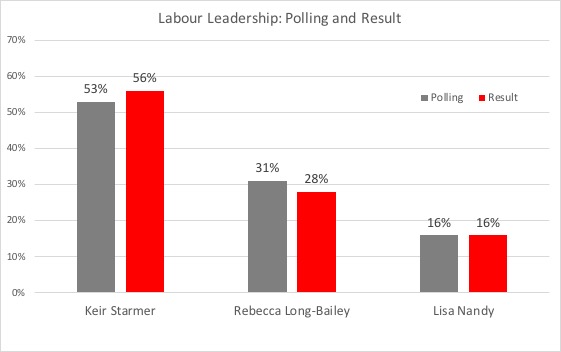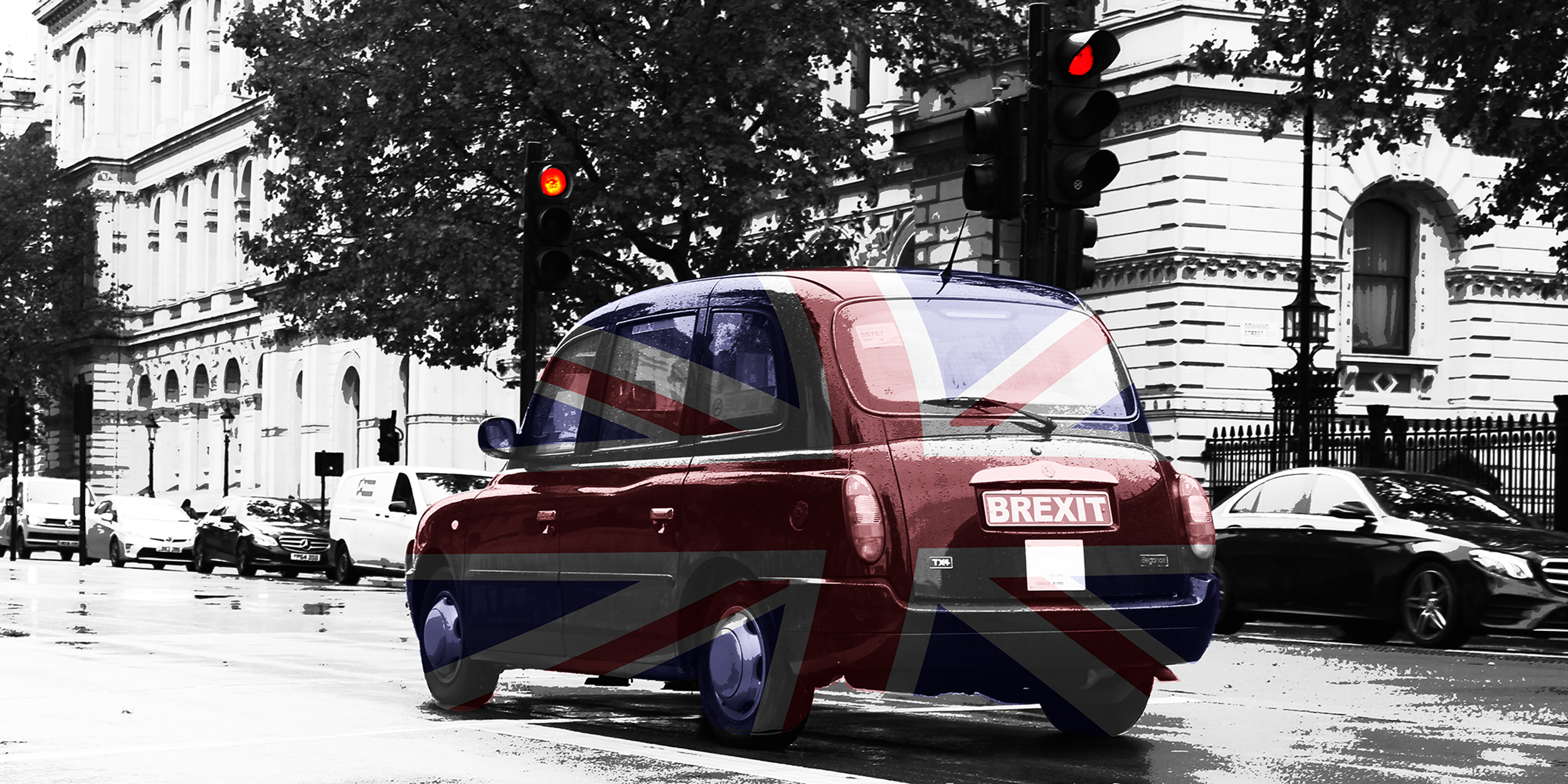It may not have been the news story commanding most of the public’s attention, given the global coronavirus pandemic, but the Labour Party announced the winners of their Leadership and Deputy Leadership election on Saturday. The two victorious candidates, who face the unenviable task of guiding Labour back to power after its poor showing in the 2019 general election, are Keir Starmer and Angela Rayner, both of whom were the favourites to win their positions. As they settle into their new roles, Joe Greenwood-Hau argues that we can gain an overview of the situation by looking at some of the recent polling on this topic, which predicted the result well in advance and helps us understand it, but is less conclusive on the role of leaders in shaping political debates.
The results on Saturday delivered good news for Starmer and Rayner but also for pollsters who had predicted the outcome quite some time ago. At the end of February, a YouGov poll of Labour Party members indicated a victory for Starmer in the leadership contest, with 53% of the vote compared to 31% for Rebecca Long-Bailey, commonly seen as the candidate who would continue in Jeremy Corbyn’s direction of travel, and 16% for Lisa Nandy, the longest serving MP of the three contenders. These figures were remarkably similar to the final result of 56% for Starmer, 28% for Long-Bailey, and 16% for Nandy, which suggests not only that the pollsters did a good job but also that many Labour members had already decided who to vote for well in advance (indeed, only 12% said that they didn’t know who they would vote for at the time of the poll).
Turning to the Deputy Leader election, the same YouGov poll indicated that Angela Rayner would fall just short of victory in the first round (Labour uses the STV electoral system for such votes, allowing members to rank the candidates from most to least favoured), with 47% of the vote, but would push that up to 52% in the second round, after the elimination of Ian Murray. In the event, she fell short of these figures, gaining 42% in the first round, being pushed up to 47% after the elimination of Dawn Butler in the second round, and hitting 53% after the elimination of Ian Murray in the third round. The polling did not predict this result quite as closely but did identify the victorious candidate, and the fact that she would not pass the threshold for election in the first round. The change between the polling and the result may reflect the lower salience of the election, greater number of candidates and, thus, the larger group of undecided voters (25%) at the end of February.
Beyond the headline figures, the polling also gives us some useful insight into why Keir Starmer was the clear victor in the Leadership contest. Although seen as a compromise candidate by some, many members felt that they did not have to compromise very much to vote for him. He was clearly seen as the most competent candidate (with 73% of members indicating that they thought as much) as well as being considered strong (49%), likely to win a general election (43%), but nevertheless principled (51%). The equivalent figures for Rebecca Long-Bailey, his closest challenger, were almost all notably lower (competent: 38%, strong: 26%, likely to win a general election: 16%, and principled: 52%). So, whilst many Labour members were in a mood to compromise in order to win a general election, many clearly felt they would get the whole package with Starmer. These perceptions, not least regarding being principled, may have been contributed to by his long history of successful legal work for a range of causes reflecting Labour values. Further, his relatively high name recognition amongst the public, due to his position as Shadow Brexit Secretary, probably helped as well.
Of course, Jeremy Corbyn, also has high name recognition and a long history of standing up for what he believes in, so these things alone do not spell guaranteed victory. Polling can provide some useful insight here too, and it is not kind regarding the outgoing leader, who is seen as having changed the Labour Party for the worse by 56% of the public. It is worth noting, however, that the more electorally successful Tony Blair, who has the benefit of a longer cooling-off period, is also seen as having had a negative effect on the Labour Party by a plurality (38%) amongst the public. Turning to one of the key policy areas that Corbyn focused on as leader, the number of people selecting the NHS as one of the most important issues facing the country rose steadily in the run up to the general election in December (though it never surpassed Brexit), which may reflect Labour’s anti-austerity message cutting through.[1] However, it may also reflect voters activating their party identities, or choosing who to vote for as the election approached, and then selecting their most important issues in line with that.
Whatever the drivers, these patterns were also reflected in the public’s judgement about which party would be best at handling the NHS, with a boost in Labour’s ratings here prior to the election (though they lagged much further behind the Conservatives with regards to Brexit). Although not conclusive, these patterns, as well as Labour’s surprisingly strong (though not victorious) showing in the 2017 general election, would be consistent with at elements of the anti-austerity message cutting through with some sections of the electorate. So, perhaps the outgoing leader can lay some claim to having shifted the debate in the country, though these polling results to not prove this conclusively. It could be, instead, that the public tired of austerity regardless of political leadership and this is what drove the Conservatives to soften their approach to public spending.[2] Such questions around the capacity of leaders to shift public debate and perceptions, and the extent to which they should lead the public or reflect their opinions, are now just some of the many conundrums facing Keir Starmer and Angela Rayner in their new roles. How they respond will be an important part of the future electoral success of the Labour Party, which also remains an open question.
[1] For understandable reasons, the NHS is very clearly seen as the most important issue facing the nation currently, whilst the economy has also seen a boost in its importance due to the coronavirus pandemic.
[2] Before recent events forced them to change tack more dramatically.
Note: this article gives the views of the authors, and not the position of the LSE Department of Government, nor of the London School of Economics.
Image credit: Chris Boland via Flickr






